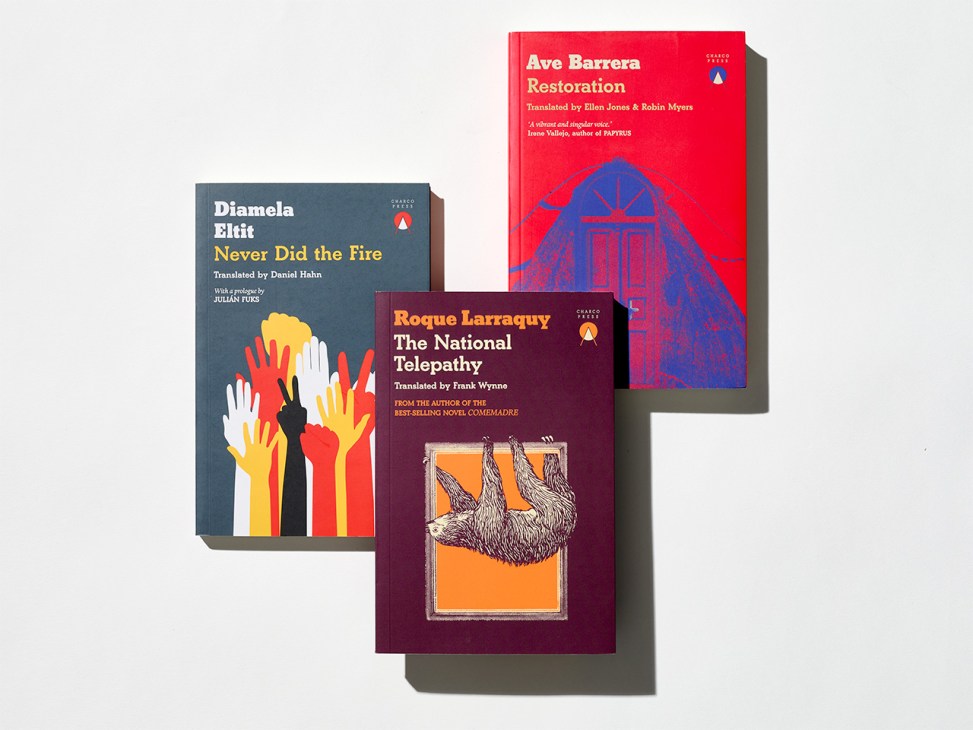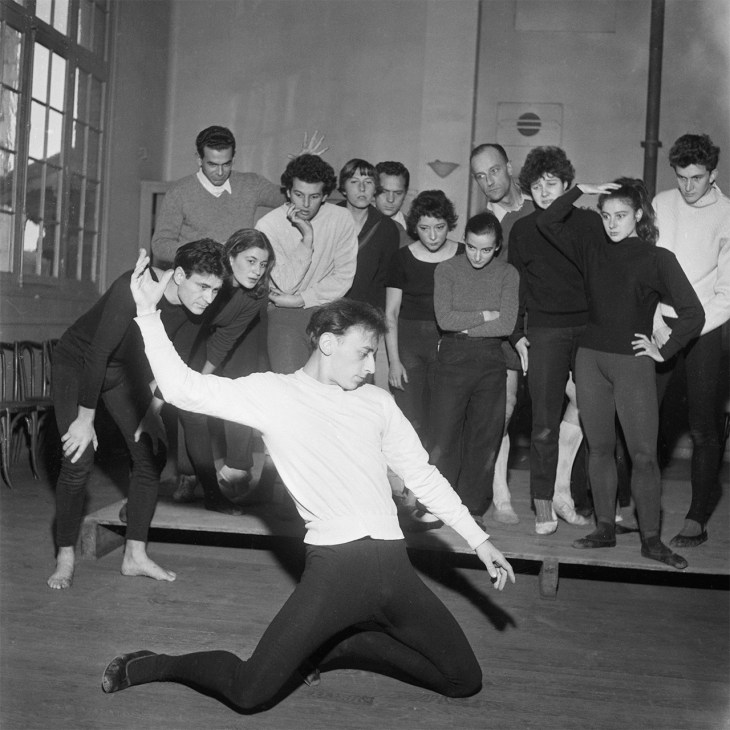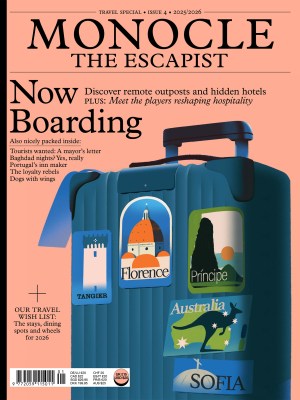After US forces captured Nicolás Maduro, members of the Venezuelan diaspora in Brazil gathered in central São Paulo to celebrate the downfall of a man widely seen as corrupt, brutal and dictatorial. The occasion was joined by many Brazilians, particularly those from the right, who have long lamented the degradation of once-wealthy Venezuela under Maduro and his socialist predecessor, Hugo Chávez.
The impromptu celebrations, however, were at odds with the prevailing political climate across much of Latin America, where leaders expressed shock over the White House’s casual readiness to intervene in the region. Not only was the operation against Maduro an affront to national sovereignty but it raised the spectre of military conflict in a region that – despite its many other problems – has for decades been peaceful at the nation-state level.

In Brazil, president Luiz Inácio Lula da Silva condemned the intervention as crossing an “unacceptable line” and the “first step toward a world of violence, chaos and instability.” But it was Gabriel Boric, the outgoing leader in Chile, who addressed the elephant in the room: “Today, it’s Venezuela. Tomorrow, it could be anyone.” He pointed out that the US’s blatant coveting of strategic resources is hardly confined to Venezuela. In this case, it is oil. But in Chile, it might be copper, which is essential for AI infrastructure. In Brazil, it could be rare earths, critical for next-generation military technologies. In Paraguay, it might be access to bountiful hydroelectric power for data centres and other digital infrastructure. The list goes on.
The US has a long history of interference in Latin American politics, including the support of brutal Cold War-era military dictatorships in Chile, Argentina, Brazil and elsewhere. The return of gunboat diplomacy and military adventurism in Venezuela is, for many Latin American leaders, a return toward a dark past. And US officials have done little to assuage anyone in the region of such concerns. A day after the Venezuela strikes, Trump told reporters that he liked the idea of a military operation against Colombia, calling left-wing president Gustavo Petro a “sick man”. The US has also openly threatened Cuba and made veiled threats against Mexico. And if the intention of the White House was not clear enough, a cartoon image posted to an X account linked to the US president showed Trump as a colossus standing astride North and South America, brandishing a large baton.
While the prospect of fresh military strikes might currently preoccupy Latin American leaders, another potential avenue for US adventurism in the hemisphere is upcoming elections. This year, Brazil, Peru and Colombia will head to the polls and leaders there will need to be on guard for signs of electoral interference. Argentina, Ecuador, Paraguay, as well as the incoming administration in Chile, are already sympathetic to the Trump White House. If Brazil, Peru and Colombia swing in that direction this year – either with or without interference – Washington will be one step closer to its dreams of overt US hegemony in the Western Hemisphere.
Bryan Harris is a journalist based in São Paulo. You can read more of his pieces here. For more opinion, analysis and insight, subscribe to Monocle today.
South American literature is enjoying some well-earned attention right now. Die My Love, a film starring Jennifer Lawrence and Robert Pattinson that graced cinema screens at the end of last year, is based on the 2012 novel Matate, amor by Argentine author Ariana Harwicz. But before a translated version of the book was published in 2017 (and then picked up by the Scottish filmmaker Lynne Ramsay), the story was inaccessible to the English-speaking world.
There are several publishers bringing contemporary South American literature to fresh audiences – Fitzcarraldo Editions and New Directions among them – but perhaps the most stylish is Charco Press. The tight-knit publishing house, comprising just five people, is a global affair: founders Carolina Orloff and her husband, Sam McDowell, hail from Argentina and New Zealand respectively, though they currently live and work in Edinburgh. They have made room for themselves in the competitive publishing arena by identifying which untranslated works will do well in front of new audiences – a mission that began back in 2016. “Our first catalogue consisted of only five titles, all from Argentina,” Orloff tells Monocle. “We wanted to make an immediate impact and show just how many styles, aesthetics and tones could be offered from the contemporary literature of a single country in the region.”

Now, Charco has a growing roster of nearly 50 writers from across the continent and an output of eight to 12 books a year. Their determination is finding success. Within the first two years of starting the press, Charco was longlisted for the International Booker Prize – one of the leading awards for global works in translation – with Die, My Love. It was then shortlisted in 2022 with Claudia Piñero’s Elena Knows and once more in 2024, for Not a River by Selva Almada.
That year was something of a watershed for literature from the region; in total, four South American titles featured on the International Booker longlist. But bringing the right titles to English-speaking audiences at the right time is no easy task. Orloff and McDowell’s respective disciplines help them to identify gaps in the market, blending taste with the mechanics of the industry. “I’m more obsessed with the academic side of things,” says Orloff. “The translation, the literature, the words. Sam comes from a different background. He’s concerned with marketing and getting projects off the ground, bringing them to life. It’s a good combination.”
In publishing, books are – for better or worse – judged by their covers. The striking, figurative façades of Charco Press novels are also South American exports. Pablo Font, Charco’s in-house artist and designer, works remotely from Argentina – and the connection with Orloff’s homeland isn’t taken for granted. “I don’t know how other designers are but I work closely with him and he gets very involved,” she says. “We have long discussions about the themes and what we want to evoke at first glance.”
With a growing presence of the region’s writing in English-language markets, it’s becoming easier to identify burgeoning trends. In South America, there is a wealth of Narco-literature: books devoted to (and perhaps romanticising) its problems with crime. While these dark novels are often written by men, there are plenty penned by women. The key difference is that the latter rarely garner the same attention nationally.
Both of Charco’s works that graced the Booker’s shortlist are written by women. As these violent and often abrasive novels journey up into North America or hop over the Atlantic Ocean, they begin to tell a slightly different story. In translation, there seems to be more scope for work by female writers to be lauded than in South America.
The differences are language and labelling. As the novels cross the pond, they also move across genres, becoming “translated fiction”. Perhaps this primes readers for a different experience, imbuing the titles with an exotic allure and reeling in audiences who might not have gravitated towards the original genre. But this, Orloff thinks, fails to properly credit the standalone merits of the text. “Those books weren’t chosen because we thought that they were doing something niche and unseen. We choose books that we think are brilliant – and that need to exist in English,” she says. “As an editor, there’s a feeling that almost transcends commerciality. I feel as though we have an ethical responsibility to get these books read.”
Three recommendations from Charco’s catalogue:
1.
‘The National Telepathy’ by Roque Larraquy (tr. Frank Wynne)
Buenos Aires-born Roque Larraquy is no stranger to having his work published in English. His first translated novel, La Comemadre (The Mother Eater) was longlisted for the 2018 USA National Book Award for Translated Literature. Larraquy’s latest novel is a kaleidoscopic and provocative tale about an early 20th-century Peruvian rubber company, which transports human cargo and attempts to establish Argentina’s first ethnographic theme park.
2.
‘Restoration’ by Ave Barrera (tr. Ellen Jones & Robin Myers)
The premise of Restoration is simple – Jasmina, a young woman, is hired to restore her maybe-boyfriend’s abandoned family home. But the depth of Mexican-born writer and editor Ave Barrera’s narration creates a powerful story about the female experience that raises as many questions as it provides answers.
3.
‘Never Did the Fire’ by Diamela Eltit (tr. Daniel Hahn)
Chilean writer Diamela Eltit is as daring on page as she is in real life (in the 1970s she staged artistic anti-Pinochet protests). This novel is inspired by some of those activities and is a culturally wrought story that centres on an elderly couple – survivors of Pinochet’s regime – and the ever-present ghosts of the past.
Read next: Five thought-provoking books that will challenge the way you think
Saudi Arabia and the UAE have presented themselves as the twin pillars of Gulf power for much of the past decade. Aligned on security, broadly synchronised on diplomacy and increasingly influential beyond the region, they have mediated conflicts, bankrolled fragile states and styled themselves as pragmatic problem-solvers in a volatile world. This is why the latest tensions between Riyadh and Abu Dhabi over Yemen feel both striking and consequential.
On the surface, the dispute looks procedural: flights suspended at Aden airport, diplomatic delegations prevented from landing and disagreements over inspections, airspace and who ultimately exercises authority on the ground. But there is a strategic divergence between the two allies, whose visions for Yemen – and, by extension, regional order – no longer align as neatly as they once did.
Yemen has long been fragmented. After more than a decade of war, the country remains divided between the Iran-aligned Houthis in the north and a loose constellation of forces in the south, backed by different external actors and driven by competing agendas. Saudi Arabia entered the conflict in 2015 with a clear set of priorities, including border security, the rollback of Houthi influence and the restoration of Yemen’s internationally recognised government. The UAE joined the fight with similar ideas but gradually pursued a different logic – cultivating local power brokers, securing ports and coastlines, and backing the Southern Transitional Council (STC), a separatist movement seeking autonomy, if not outright independence, for the south.

These differences were managed for many years. Co-ordination continued, disagreements were contained and the shared imperative of countering the Houthis provided enough common ground to keep the partnership intact. What has changed recently is not the existence of divergence but its visibility and stakes. The STC’s expanding territorial reach across southern Yemen, particularly in areas close to the Saudi border and key infrastructure, has sharpened Riyadh’s concerns.
The UAE, meanwhile, has further reduced its overt military footprint but retained significant political leverage through local allies. This recalibration has left space for those allies to act more assertively, testing not just Yemen’s fragile arrangements but also Saudi Arabia’s tolerance for a southern power structure that it does not fully control.
What makes the current moment unusual is how public the friction has become. Airports closed, delegations turned away and accusations exchanged in plain sight – these might not equal a partnership in collapse but they are not the signs of seamless strategic alignment. Rather, they point to a relationship under strain; one struggling to reconcile competing priorities at a time when both capitals are keen to project stability and diplomatic maturity.
The irony is that Saudi Arabia and the UAE have spent recent years positioning themselves as brokers of de-escalation: in Sudan, across the Horn of Africa and even on more internationally visible stages (Russia and Ukraine, Israel and Palestine). Yet in Yemen, they appear unable to mediate between their own interests. Two states that increasingly speak the language of restraint abroad now find themselves locked in a contest at home, conducted through proxies, pressure points and procedural disputes rather than direct confrontation.
Will this lead to an open rupture between Riyadh and Abu Dhabi? That remains unlikely. The economic, political and security costs would be enormous and both capitals are acutely aware of the value of their partnership. This is not a march towards conflict. It is, however, a reminder that Gulf alliances are fundamentally transactional. Shared history does not guarantee shared futures. For the wider Gulf, the lesson is sobering. Unity cannot be assumed, even among the closest of partners.
While regional powers recalibrate and jostle for influence, ordinary Yemenis bear the consequences, trapped between rival agendas that they have little ability to shape. Each diplomatic standoff entrenches that fragmentation further; each unresolved power struggle pushes a political settlement a little more out of reach.
Inzamam Rashid is Monocle’s Gulf correspondent, based in Dubai. For more opinion, analysis and insight, subscribe to Monocle today.
Gunboat diplomacy is nothing new. Armadas have been dispatched to loom menacingly off the coast of one’s adversaries at least since the Athenian empire sent triremes to put the squeeze on the Delian League. Gunboat diplomacy isn’t even new to Venezuela. It was on the receiving end of a naval blockade by Italy, Germany and the UK in 1902 and 1903, and the Netherlands imposed something similar in 1908.
When the US Navy began building up its presence in the Caribbean in the second half of 2025, it looked like an endeavour of this sort. If it wasn’t evident why the US suddenly felt it necessary to pressurise the ghastly regime of Venezuela’s then-president, Nicolás Maduro, it was clear that it was committed to the bit, even sending the aircraft-carrier strike group attached to the USS Gerald R Ford, a warship that by itself fields a larger contingent of dedicated combat aircraft than Venezuela.

In the event, the payoff was more akin to the US invasion of Panama in 1989. That was undertaken to capture the country’s then-dictator, Manuel Noriega, a former CIA asset turned pestilential liability. As US paratroopers descended, Noriega holed up in Panama City’s Vatican embassy, where he was berated into surrender by chuckling American soldiers playing heavy metal tunes at deafening volumes.
The Venezuela operation appears to have gone more smoothly than that – indeed, it seems to have gone so precisely to plan that Maduro must be harbouring suspicions about his former colleagues. Maduro and his wife, Cilia Flores, were swiftly seized and exfiltrated, and he could now be tried on the charges on which he was indicted in the Southern District of New York in 2020 – or on new charges also naming his wife and son, among others. Noriega is again the obvious precedent: he ended up serving time in the US, France and Panama.
Noriega could also prove a useful marker when it comes to assessing what this will all mean more broadly – which might be not much. Then, as now, the finger-steepling foreign-policy cohort went into hyperdrive about shifting spheres of influence, a revival of the Monroe Doctrine, a new world order and so on, but all that actually happened was that the US installed as president Guillermo Endara, who had won the 1989 election that Noriega ignored, the world continued turning and, though Endara was far from perfect, he was a vast improvement.
The analogy holds up pretty well here. Maduro is, as Noriega was, an inveterate election rigger. Under Joe Biden, the US was among the countries that not only refused to recognise Maduro’s “victory” in Venezuela’s presidential election of 2024 but also acknowledged his opponent, former diplomat Edmundo González, as the rightful president-elect. González is presumably still available; ditto opposition figurehead María Corina Machado, whose politics are not a million miles from those of Trump, and who (and this cannot be altogether discounted as an animating factor of the weekend’s events) dedicated the Nobel Peace Prize that she won last year to the US president.
As of this writing, Trump seems keener on a less disruptive transition, suggesting his willingness to work with Maduro’s vice-president, Delcy Rodríguez, so long as she does what she’s told (she has issued pro forma statements of defiance but the offer of power is often persuasive). But Trump has his self-glorifying triumph, his television spectacle, and we have a lifetime’s evidence that this is all that he ever wants until he wants the next one. Readers are invited to recall that it’s less than a fortnight since he decided to bomb Nigeria.
Andrew Mueller is the host of ‘The Foreign Desk’ on Monocle Radio and a regular Monocle contributor. For the latest news and developments in Venezuela, tune in to Monocle Radio.
Further reading? Monocle’s writer in Venezuela reported on the raid here. And after a successful operation in Caracas this weekend, is Marco Rubio hoping to be on the ticket for 2028?
Welcome to 5 January, folks. In ecclesiastical terms, today is Twelfth Night, which means that tomorrow is the Feast of the Epiphany when the wise men felt the power of the Holy Spirit from the infant Jesus in the manger. Back then, and after such long camel rides, Christmas seemed like it knew how to kick back and chill – at this point in the greatest story ever told, surely there were still all sorts of glad tidings to be announced and blessings bestowed. But now? Well, your decorations are down, you’ve just logged into your email and in three hours’ time you’ll be wondering whether you should feel guilty for thinking about what sort of wine is the perfect partner to a sandwich from Pret. You’re back, then, at work. Do you need a drink yet?
It could depend on when you went off on holiday. If you’re the sort of person who toasted the New Year with a couple of glasses of Krug, lots of hugs from friends and some well-timed wishes whispered in the ear of your significant other before turning in at about half past two, then good for you. The eight hours’ shut-eyed restoration that followed your classy party will have blissfully dispelled any wish to darken the doors of the cocktail cabinet any time since. And isn’t it your business partner’s birthday at the end of the month? A perfect time to pop a cork. Well, congrats.

Or maybe you saw in the New Year by hiring a little house on a remote coast somewhere in Sumatra (or maybe Shetland), the tide and flow of which seemed to baptise you anew in a heightened sense of grounding you in the here, the now. You didn’t need a drink then and you won’t need a drink any old time because you’re the you in your youniverse. Well, please sod off and only come back when you need a sand-dry martini.
No? OK. Or maybe you went for it a bit because it was a really fun (and sociable!) party season in the run-up. Then at Christmas proper it was your turn to “do the drinks” and you didn’t want to be shown up but you also didn’t want everyone else to drink all that nice Château d’Yquem – or the chambertin or the sauternes. And then people kept turning up with bottles so it wasn’t your fault, right? Am I gabbling? I’m probably fine! And then, and then, um, and then…last night. Well, there were some bits to finish and the cheese was wasted without something decent to go with it and the cognac had hardly even been started and anyway. And isn’t micro-dosing good for you? So imagine macro-dosing. You do the math! Well, in a way, congratulations because your boss has probably already told you that you’re now starting tomorrow at the earliest. But also working on Saturday. Oops.
So: yes, you do need a drink. I’d recommend a riesling kabinett from the women-run vineyard of Dr H Thanisch in the Mosel Valley, produced – as if by today’s fickle finger of fate – from the vineyard known as the Berncasteler Doctor. And the doctor always knows best. Delicious with that crayfish and rocket from Pret. Then? Maybe give it a wee rest for a couple of weeks. Happy New Year, friends!
Robert Bound is a contributing editor at Monocle. For more opinion, analysis and insight, subscribe to Monocle today.
An actor and an entrepreneur walk into a room. At first glance, they have little in common but today they have gathered at the National Theatre in London with the same goal: to influence people and build rapport. Together with theatre director Corinne Micallef, actor Sarah Thom is leading a workshop that will shake up its participants’ beliefs about themselves and their abilities.
Running since 1997, these courses at the National Theatre have channelled the art of stagecraft to help everyone – from apprentices to top-level executives – to feel more confident and persuasive in their line of work.

But what can a seasoned leader with years of experience and successful businesses under their belt learn from this kind of seminar? “We’re surprised by how often people at really senior levels seek out this kind of training because no one gives them feedback anymore,” says Micallef. “During these courses, we shine a light on things that they weren’t aware they knew, which they can now use consciously.”
The cosy, wood-panelled Duffield Studio, with views over the River Thames, is a safe space to try and fail without judgement. “It’s quite a leveller in some ways,” says Micallef, as she and Thom take Monocle through rounds of exercises that involve warming up our face and body. We also visualised a place where we’ve been happiest – an exercise that can help to stay present and grounded during moments of uncertainty or high pressure. Some pertinent questions reveal participants’ management style, which can be an eye-opener for those who believed that they were good communicators or negotiators but find that the opposite might be the case.
A key takeaway from the workshop is for participants to understand how others might perceive them (some discover that they come across as tense or unfocused, while others pick up on their particular speech quirks for the first time) and how a slight adjustment in manners of sitting or speaking can change an atmosphere entirely.
The day concludes with participants role-playing various scenarios that they find troublesome, with Thom, Micallef and the others giving notes – much like during a theatrical rehearsal. “As a director, it’s about being able to see where people need to go or where they could go,” says Micallef. “The goal of the participants is that they learn how to be confident, charismatic and genuine communicators.”
The outcome, says the theatre director, can be a more astute understanding of how to nurture partnerships, become better collaborators and, most importantly, build trust. “Ultimately, people want to do business with people that they believe and trust,” she says.
In today’s world, where so much of our business is carried out online, building trust and cementing relationships is more challenging than ever. And even when we’re finally in the room with the people we’d like to win over, so much rests on not just what we say but how we say it. A well-honed message delivered with chutzpah and conviction – or even just with a straight posture and good eye contact – can help steer the conversation to a desirable outcome. “I love it when I can translate stage skills to everyday life,” says Thom as we pile out of the studio. “There are moments of theatre throughout the day for everybody.”
Five tips to take from the rehearsal room to the boardroom:
1.
Ground yourself. Plant your feet hip-width apart. Soften your knees. Relax your shoulders.
2.
Breathe low and deep. Feel your breath in your belly. Expand your ribcage with every inhale.
3.
Take your time. Slow down and take time to breathe. Pauses are a gift to your audience – they allow your message to land.
4.
Be intentional. What effect do you want to have on your audience? Do you want to motivate? Reassure? Inspire?
5.
Focus on your audience, not yourself. Be present. Don’t be distracted by what’s coming next or fixating on what just happened.
For a discussion of the production design behind the National Theatre’s ‘Inter Alia’, tune in to ‘Monocle on Design’.
Happy New Year, dear reader. Is your tail bushy? Are your favourite new garments from Santa laid out for work tomorrow? Are you prepped and ready to roll? All set to lead from the front? If you’re in Europe, I do hope that this is the case as large swathes of the continent need to get back to work in a most serious, fully energised manner. At a time when Europe needs to rearm itself, factories struggling to turn out more than two fighter planes a month inspire little in the way of hope – let alone a sense of security.
What happened to the industrial base of the 1940s that could churn out a Lancaster bomber each day without breaking a sweat? For sure these aircraft weren’t as sophisticated as a Gripen or Rafale but nor did factories of this period have much in the way of automation. If we’re serious about big infrastructure or continuing to be the world’s holiday playground, then railway repairs cannot be conducted on a single daytime shift, Monday to Friday. Likewise, new runways cannot take a decade to plan and pave and terminal extensions must not take eight years to complete.
We’ve found ourselves in a place where working overnight or at weekends on building sites (offices included) is considered inhumane even though many other corners of the economy work round-the-clock, seven days a week. Western Europe built up the world’s most luxurious and heartily exploited social safety net but the wheels are juddering and falling off my dear Monocle subscriber, and yet millions are coddled because they’re overwhelmed, have a tummy ache or a runny nose. What happened to sucking it up, popping a Motilium and buying some tissues?
Today, in most European countries, the employer is too often in the wrong while the employee is increasingly guaranteed a job for life or a fat payout for not being particularly talented. Why on earth would you want to raise money or invest your own funds in a dazzling new venture when governments – local, federal and in between – treat business owners with contempt and have zero concept of what it means to take a risk or set out your own stall? Meanwhile, it’s the hotel, restaurant, bar and shop owners who keep Europe all buff and sparkly for Americans, Thais, Indians and Mexicans to pile in and spend hundreds of millions of euros as the entrepreneur struggles under stifling labour laws and planning regulations.
By now, you will have detected that I spent a lot of time these weeks walking around an icy lake thinking about Europe’s future and what it means to run a family-owned media enterprise. Is Europe still the best place for such a venture? Will policymakers wake up and encourage growth and fresh thinking? Or are there sunnier – even funnier – places to run a media operation these days? All thoughts welcome at tb@monocle.com and all the best for 2026.
Enjoying life in ‘The Faster Lane’? Click here to browse all of Tyler’s past columns.
As unlikely as it sounds, Japan is the world’s snowiest country. Of the global cities with more than a million residents, Sapporo, in the northern prefecture of Hokkaido, has the second-highest annual snowfall in the world. On average, almost five metres of snow falls every year compared with a mere two metres in Toronto, for example. It makes sense, then, that Japan would produce its own snowploughs.

That said, there are only three manufacturers left in the country. They are survivors of new emissions regulations that budged several competitors out of the market – and Sapporo-based Nichijo controls 62 per cent of the domestic market. The company makes yellow or orange rotary ploughs with red blades at the front to tear through the thickest blankets of snowfall. Tetsuya Nakamura, from Nichijo’s planning division, says that the company’s strength lies in its control of everything from design to sale. “Most of our staff have an engineering background so we can tailor our snowploughs to the specific needs of each customer,” he adds. Such is the cost of a custom-order snowplough that the buyers tend to be municipal governments and airports
“Each country has its own particular needs when it comes to snowploughs,” says Nakamura. In Japan that means operating on narrow city roads, turning with ease and, crucially, blowing snow out of the way – the citizens of Japan’s cities like their snow to be piled up in an acceptably aesthetic way. “In other countries, it’s enough to push the snow to the edge of the road,” he adds. “Here, people want to be able to direct the snow with precision.”

Those requirements have kept non-Japanese rivals such as ABBI Schmidt and Oshkosh out of the market and nudged Nichijo to develop an inventory that runs from super compact machines to those large enough to clear an airport runway. The company has had plenty of time to perfect its machines. It produced Japan’s first rotary snow plough locomotive in 1958 and was then asked by the government to make a vehicular version the Hydraulic Torque Converter Rotary, or HTR. At the bigger end of the HTR range is a nine-metre bruiser that can clear an expressway of 4,200 tonnes of snow per hour, blowing it through a chute at a designated distance up to 45 metres away.
Nichijo has come a long way from its roots. Its ploughs now have touchscreen monitors, a single joystick instead of multiple levers, and an automated system that adjusts speed according to the depth of the snow the plough must drive through. The company’s latest development is an eco-friendly plug-in hybrid machine.
So, is a business based on snow really a good bet in our warming world? “It’s not so much that we’re seeing less snow now,” says Nakamura. “Instead, we’re seeing more ‘guerrilla snow’ or days when snow is dumped unexpectedly.” The company is hedging its bets, though. It also manufactures heavy goods carriers for factories. “We can adapt,” he says. “Our role is to keep the roads safe with products that meet the needs of the day.”
nichijo.co.jp
Japan’s snowiest cities
8 metres
Average annual snowfall in Aomori
5 metres
Average annual snowfall in Sapporo
3.6 metres
Average annual snowfall in Toyama
Read next: How innovative snow-clearing technology is developing across continents
In the early hours of Saturday, Venezuela experienced an unprecedented offensive – a three-hour US military operation that marks the first foreign attack on the country in its 200-year history. The power of Chavismo, a radical left-wing political ideology that has governed the South American nation for more than a quarter of a century, is teetering. President Nicolás Maduro has been captured and removed from Venezuela by US special forces along with his wife, former deputy Cilia Flores. According to the US attorney general, the pair are being taken to New York City after being indicted by a federal court.

Millions of Venezuelans awoke around 02.00, when US aircraft flew low over the capital, Caracas, and large cities in the states of Miranda, Aragua and La Guaira. Both military and civilian targets were hit by missiles, according to a lengthy statement published by Maduro’s own government. Video recordings show key national security targets, such as the Generalissimo Francisco de Miranda Air Base and Fuerte Tiuna, in flames. The aircraft were followed by helicopters that swooped over the administrative areas of the capital.
Little is known locally about where special forces took the president from but he was usually found at his official residence, Miraflores Palace. However, a military bunker has also been reported as the target of today’s operation. Despite months of US threats, the Venezuelan leader has not been in hiding – just this week, he attended official events in Caracas and nearby towns, speaking publicly and conducting media interviews. While the capture came as a surprise, the bombardment did not. Still, Venezuela’s civilians were unprepared – there are no bunkers, infrastructure or preparation policies for the common people to use.

Some 90 minutes after the first planes were heard, the attack was seemingly over. All that remained in Caracas was an eerie silence and the odd wailing siren echoing through the empty streets. Venezuelans were glued to their phones and so many must have read US president Donald Trump’s declaration on social media, at 05.00 local time, announcing the capture of Maduro and his wife.
The rest of the government appeared to greet this news with defiance – announcing a state of emergency and calling the faithful to the streets. Vladimir Padrino López, Venezuela’s minister of defence, seemed caught in two minds: after video recording that described the attack as “despicable” and promising to “resist”, moments later he was urging “serenity, calm, sanity.”
This morning, as bleary eyed Caraqueños awoke to a world turned upside down, not much of the latter was in evidence. Venezuelan vice-president, Delcy Rodríguez, who must now be considered the de facto head of state, demanded on live television that the US provide proof of life for Maduro and Flores.
This call has spawned a reaction among Chavismo loyalists. With their leader gone, some are massing in the capital’s streets. But thousands of militiamen cannot win a fight against US forces who seem to have left as quickly as they came in. So, who will they turn their ire on? Ordinary Venezuelans most probably. Those who defend the socialist project will no doubt be buoyed by Diosdado Cabello, the party’s second hard man and interior minister, appearing on TV to denounce the attacks. As the dust settles and the decapitated government begins to recalibrate, many fear a wave of repression is on its way.

What will happen now in a nation governed for the past 12 years by a leader who has put the country through so much economic, political and social turbulence? Likely more of the same. Who will seize the reins? No one is certain. The ink of Venezuelan history is still fresh.
Monocle’s writer in Venezuela has asked to remain anonymous while the situation on the ground remains fraught and new waves of repression look likely.
Further reading: Will Marco Rubio’s Venezuela strategy get him on the ticket for 2028?
I source mine from The Monocle Shop in London’s Chiltern Street: bright-yellow A6 Leuchtturm1917 pocketbooks; hardcover, dot-grid paper. And I suggest that you do the same – or find your own paper-and-pen solution. Because while I am not one for pet causes (unless it’s actual pets, then I am all in), I am a firm believer in keeping a diary.
My discipline is simple. Every morning, without fail, I find a few minutes to write down what happened in the previous 24 hours (this would have stumbled as a pastime if I had attempted a bedtime routine). Sometimes when I am on a plane, away on holiday or just in the mood, I will write several pages; other times we are in the land of the haiku.

But something is always committed to page – blue ink, nib nipping across the paper. Sometimes the news or events edge into what’s written; other times it’s just about work, the banalities of daily life, friends. Why the commitment? That’s hard to say. The diaries are not written to be read by anyone else (please feel free to put them in the recycling after I am gone). Indeed, you would need a code breaker à la Bletchley Park to crack my handwriting (even when I try to decipher some pages, I struggle to unravel the scrawl). But that doesn’t matter because it’s not like I spend my evenings reliving the delights of 2011 or wondering what I was doing on this day in 2015. Instead, once a diary is fat with recollections, thoughts and, may I say, the occasional amusing aside, I close its elasticated strap and put the yellow notebook on a shelf along with all the others.
So why, then, the recommendation to take up the habit? Because it orders your thoughts, makes you focus on what’s important, lets you see how various narratives weave not only across the pages but through your life too. And, one day, when your memory might need jogging, it will be there – an off-stage prompter.
You could keep a digital diary, sitting there on your desktop along with your household accounts, but give paper a go and start today. We are only three days in, so let’s make this a year that you hold onto – in ink. And, no, your partner cannot read them.
To read more columns by Andrew Tuck, click here.







